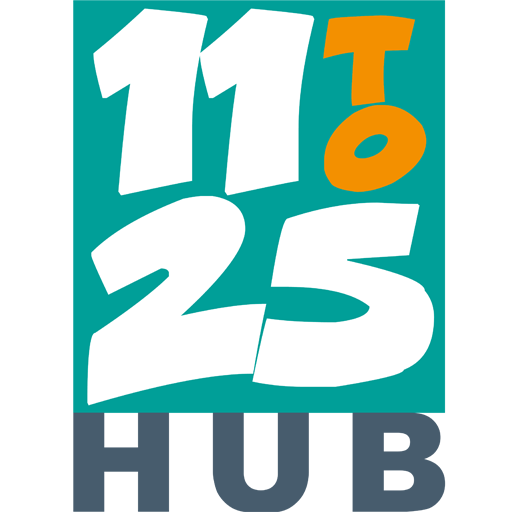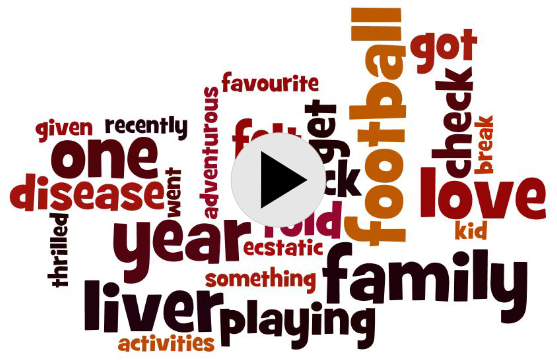Introduction
Young people who are physically active can reap a range of direct and indirect health benefits, and the close link between physical and mental health is well known. Physical activity, being active, can prevent obesity, help build strong bones, healthy joints, and an efficient heart. Physical health can also promote good mental health and establish a healthy lifestyle in preparation for adulthood, and in the case of many long-term medical conditions is recommended for the management of symptoms, illness progression and reduce the impact on the body (and mind!). In short, an active, healthy body is more likely to contain an active, healthy mind. This link between being active, looking after the body and a better state of mind exists for all of us, young, not-so-young, differently able and anyone affected by chronic health issues.
Some
people could find parts of this module upsetting, as it explores
sensitive issues such eating disorders. Talking about activities and exercise
is an important part of healthcare, especially around topics such as eating
disorders, harmful eating or exercise activities, myth busting and other
issues.
As a young person with a health condition, you can find out from talking with your clinical team, how exercise most helps you and if there are any steps you can take to make it easier with your condition. For example, exercise can help to:
- reduce blood sugar in diabetes
- reduce the effects of asthma
- ease joint problems.
As a parent and also as a clinical team, having conversations about activities and exercise can be helpful, especially if this is done in an encouraging, supportive way respecting young people’s preferences, life choices, sense of fun or adventure.
What we'll be covering
This module will help you to think about:
- how your body image affects your health, and how this is influenced by the media
- how you can improve your physical health, alongside living with a medical condition
- what a healthy lifestyle is and what are the challenges of maintaining one
- the key people in healthcare who can support a young person in improving their physical health
We will also:
How does my body image affect my health, and how is this influenced by the media?
Young people often face significant pressure to meet strict, unrealistic, and harmful ideals around beauty and body build, weight, and shape. The quest for a “perfect” body or appearance can take a heavy toll on a young person’s confidence and their physical and mental health. Everyone – young people, parents/carers, teachers and friends – could usefully spend some time thinking about how to support young people to develop and maintain a healthy body image and self-esteem.
Body image is how we think or feel about our appearance, our bodies and how we feel in our own skin. Maintaining a normal and healthy body image during adolescence, a period of major physical and emotional changes, can be difficult. Factors that might harm a young person’s body image include:
- natural weight gain and other changes caused by puberty, for example normal changes in body shape, skin or hair
- peer pressure to look and appear a certain way
- social media and other media images that promote the ideal body as fit, thin, or muscular and encourage people to have unrealistic body goals
- having a parent who is overly concerned about his or her own weight or his or her child’s weight or appearance
- seeing material, such a pornography, in which a young person is seen as an object for others’ sexual use, rather than an independent, thinking person (sexual objectification).
The consequences of a negative body image are far reaching and can include:
- low self-esteem
- depression
- nutrition and growth issues
- eating disorders (ED) is a term used which covers a range of different kinds of disordered eating, such as bulimia or body dysmorphia.
Talking about body image can help people become comfortable in their own skin. Parents and other adults should set a good example. How you talk about your body and other people’s bodies has a major impact on children and young people.
A positive approach to diet and exercise is important, but this must be balanced with realistic goals and expectations. There is no such thing as ‘the perfect body’ or ‘the perfect diet’. All humans look different and all have different nutrition needs.
Use positive language, don’t focus on how other people look, instead emphasize personal strengths and attributes, such as ‘kind’, ‘caring’, ‘brave’ and ‘persistent’. Avoid using language which portrays negative body traits, such as ‘spotty’, ‘fat’, ‘skinny’, etc.
Understand and explain the impact of puberty and the changes which affect the body during these impressionable years.
Talk about messages in the media. A lot of media outlets send the message that only certain physical attributes are acceptable. Even media that encourages being healthy, athletic, or fit might depict a narrow body ideal — one that’s toned and skinny. Social media and magazine images are also commonly altered, for example there are Apps and filters, which will smoothen out any skin irregularities, Apps and filters that change the size/shape of your eyes and lips; digital manipulation of photos to ‘airbrush’ out cellulite, wobbly bits etc, etc. These manipulated photos can look very realistic! As a result, all people and especially young people might be trying to meet ideals that don’t exist in the real world.
Thinking about body image is something that is now starting very early, as younger children are using social media and start to worry about their weight, their looks. This means that as a young person, you can be and often are a positive role model for younger children.
Eating disorders are common and can be impacted further by the media and social media. There are online resources available which give more information and point towards support.
Your clinical team is always happy to have discussions about physical health and provide emotional support if you are struggling with how you, or a young person looks or worry about having or how to have a healthy lifestyle.
How can I improve my physical health, alongside living with a medical condition?
Having a medical condition doesn’t exclude someone from needing – as well as wanting – to keep physically fit. Fitness and body health are a spectrum and different from person to person.
One way to think about and achieve activity and fitness goals can be to use SMART goals. SMART goals break down what it is you are trying to achieve, why, how and when:
- Specific (simple, sensible, significant).
- Measurable (meaningful, motivating).
- Achievable (agreed, attainable).
- Relevant (reasonable, realistic, and resourced, results-based).
- Time bound (time-based, time limited, time/cost limited, timely, time-sensitive).
Whilst saying that you won’t get a bus home from school / college / work and will instead walk may not be achievable, a smart goal could be something small which can be developed over time, such as getting off the bus one stop early, and walking home.
Moving more and sitting less can have major health benefits. Experts recommend adults get at least 150 minutes (two and a half hours) of moderate physical activity a week. You can benefit from even a little activity at a time. Every minute counts when it comes to movement. Activities to consider include walking (especially if there is a canine companion), running, cycling, climbing, gardening, dancing, yoga, Pilates, football, tennis, gymnastics – the possibilities are almost endless! Taking care of your body you will feel better and have fewer illnesses. Brushing your teeth twice a day, washing and combing your hair, and having a bath or shower are all ways that we can keep in good condition and physical health. Eating also plays a very important part in our physical health, which we explore later.
Being as fit and active as you can will help you to:
- develop healthy bones, muscles, and joints
- control weight, build muscle, and reduce fat
- prevent or delay the development of high blood pressure and help reduce blood pressure in some young people who are affected by abnormally high blood pressure (hypertension).
Food and nutrition is a very personal thing – one size (or one plan) does not fit everyone. The NHS Eatwell Guide is a good starting point, and shows what balanced nutrition can look like. Clearly, this also depends on dietary needs or restrictions, which can change with kidney problems, liver problems, diabetes or allergies for example. Food and eating is a social activity and getting it right should be fun. Foods do not need to be viewed as ‘good’ or ‘bad’. Restricting food is not necessary a good idea and everyone one should have a balanced diet, which includes ‘treats’. Everything in moderation is a good motto to hold onto.
But you, all of you – young people, parents and healthcare teams knew this already. But how to start and keep it up? SMART goals may not be your thing – so what, how, when?
Every little helps!
You can stay fit by walking instead of catching the bus if the journey is short. Take part in all sports at school, or college join a sports club or go swimming.
Worries about body image and changes due to your condition, such as rashes, swelling, body shape etc are normal and talking about them can help. There are so many ways to stay active, that there will be a way for you.
Some young people don’t look after their physical health properly because they smoke, drink, or take drugs. This is despite them usually knowing that using substances is not healthy and can make them ill or their condition worse. The reasons for using substances are often complex and it is important to be honest and open when talking about substance use with healthcare teams. Talking about substance use, reasons for it and risks are part of normal healthcare appointments for young people, and of the HEADSSS assessment.
Prevention is better than cure
There are some illnesses that we cannot prevent by eating well or by exercising. Examples are certain viral and bacterial infections which can quickly become very serious or life-threatening. These include Meningitis (Meningococcal disease), Pneumonia (Pneumococcal infection), Poliomyelitis (Polio Virus) and others. Immunisations, also called vaccinations, have been developed and tested over many years and protect people from serious diseases.
Once we have been immunised, our bodies are more able to fight those diseases if we meet them. Some diseases can seriously harm to young people or cause lasting damage to their health, and sometimes a young person’s immune system needs help to fight those diseases. Childhood immunisations and vaccinations can give you this help.
There is a lot of information about immunisations available but, unfortunately, there is also a lot of mis-information, i.e. wrong or misleading information out there. This may affect trust in what healthcare teams advise.
If you are worried about immunisations, please speak to your healthcare team. Your healthcare team will give you honest and independent advice based on research and clinical evidence.
What is a healthy lifestyle and what are the challenges young people face to maintain this?
Young people need extra nutrients to support bone growth, hormonal changes and organ and tissue development, including the brain.
Some healthy lifestyle tips for young adults
You should check these with your clinical team, but some simple tips for young adults include:
- eating a variety of foods
- basing your diet on plenty of foods rich in carbohydrates
- replacing saturated with unsaturated fat
- eating plenty of fruits and vegetables
- Reducing your salt and sugar intake
- eating regularly and controlling portion sizes
- drinking lots of fluids
- maintaining a healthy body weight and BMI
- getting moving – exercising!
- starting today not tomorrow – and focussing on moving gradually forward.
Making healthy decisions about what you eat and drink, how active you are, and how much sleep you get is a great place to start.
Sleep and rest
The teenage years are a formative period. The brain and body experience significant development, and the transition to adulthood brings important changes that affect emotions, personality, social and family life, and academics.
The Mystery of the Teenage Brain
In this episode of The Curious Cases of Rutherford & Fry, Hannah and Adam investigate the strange goings on in the bodies and brains of teens as they embark on adolescence, and look at the surprising findings from a sleep study tracking 100 teenagers around the UK.
Sleep is essential during this time, working behind the scenes to allow young people to be at their best. Unfortunately, research shows that many young people get far less sleep than they need, for various reasons (electronic devices before sleep, stress, and anxiety etc etc).
In an ideal world, you can get better sleep by:
- budgeting eight hours of sleep into your daily schedule and keeping that same schedule on both weekdays and weekends
- creating a consistent pre-bed routine to help with relaxation and falling asleep fast
- avoiding caffeine and energy drinks, especially in the afternoon and evening
- putting away electronic devices for at least a half-hour before bed and keeping them on silent mode to avoid checking them during the night
- setting up your bed with a supportive mattress that’s the best mattressfor you. and don’t forget to bring your best pillow
- keeping your bedroom cool, dark, and quiet.
And, as with the food, the exercise and everything else – small steps and changes make a good start!
Who are the key people in healthcare who can support a young person in improving their physical health?
Medical teams are a good starting point for discussions around physical health and activity. A lot of General Practitioners (GP’s) have access to lots of physical health resources in the community.
Social prescribing
This is a relatively new initiative in the NHS and is gathering momentum. Social prescribing is when health professionals refer patients to support in the community, to improve their health and wellbeing. The concept has gained support in the NHS organisations of the United Kingdom as well as in Ireland and the Netherlands and forms part of the NHS Long Term Plan. As a part of this approach, you may see a range of professionals.
Dieticians
Dietitians support people to improve their health by providing expert nutrition and dietary advice. A dietitian can help you manage health conditions, such as: diabetes. eating disorders, and many others.
Physiotherapists (PT)
Physiotherapists help people affected by injury, illness or disability through movement and exercise, manual therapy, education, and advice. They maintain health for people of all ages, helping patients to manage pain and prevent disease.
Occupational Therapists (OT)
Occupational therapy supports people whose health, environment or social circumstances make it difficult to take part in the activities that matter to them. An occupational therapist will work with you to identify strengths and difficulties you may have in everyday life.
Lived experience
Stories are a powerful way of learning, and can help put your learning into context.
Watch or listen to the story below and think about it relates to the material in this module.
Summary
We have explored the impact of physical health on a young person’s life, and how a young person can improve their physicality. You should now be able to think how to improve physical health, and how our body images are impacted by media / social media.
We also looked at who can help, and what this help looks like – and other organisations around the UK which promote positive physical health for all people, of all ages.
If you want to know more...
There are plenty of ways to find out more. One great one is to use your NHS account to access services online on your computer, tablet or mobile phone.
Find more information on the 11to25hub
Why not dip into one of our other modules, where you can find out about other aspects of healthcare transition in more detail.
Bust the jargon!
Whether you’re a young person, a parent or a professional you’ll have realised that there’s a lot of jargon in the health and social care systems. This jargon buster from Think Local Act Personal may help. Just type in a term…
External resources
Here are some more resources that you may find helpful, engaging and informative:
- Not sure if you’re active enough? The NHS has some great Physical activity guidelines for children and young people
- Your body image is how you think and feel about your body, including the picture of your body that you have in your mind. This may or may not match your body’s actual shape and size, and it’s good to know about Body image: pre-teens and teenagers
- As you get older, begin making your own decisions about a lot of things that matter to you – clothes, music, and friends – and also about your body and health. Here’s how to Take Charge of Your Health: A Guide for Teenagers
- Physical activity, exercise and mental health for children and young people covers the benefits of physical activity and exercise, how exercise can support good mental health, and how active you need to be to feel better
- How much exercise do I need? Well, the NHS has some Physical activity guidelines for children and young people you could checkout.
How useful was this page?
Click on a star to rate it!
Average rating 4.9 / 5. Vote count: 8


